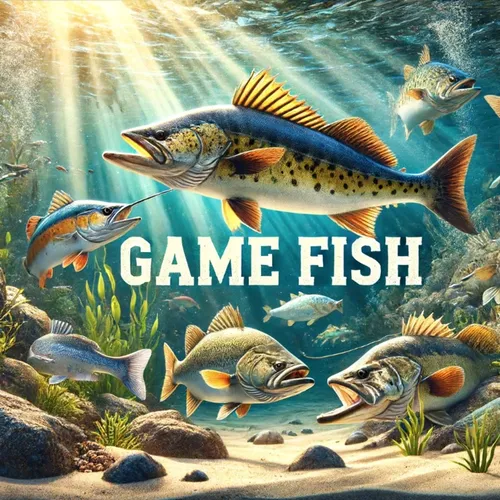"Robust Wildlife Management and Habitat Restoration Across U.S. Game and Fish Agencies"
- Author
- Quiet. Please
- Published
- Wed 27 Aug 2025
- Episode Link
- https://www.spreaker.com/episode/robust-wildlife-management-and-habitat-restoration-across-u-s-game-and-fish-agencies--67534669
Recent news from the United States reveals numerous developments and events in game and fish management nationwide. The Idaho Department of Fish and Game reported that deer and elk hunting prospects look positive for the 2025 season, with biologists highlighting healthy populations and good conditions for hunters heading into fall. Hatchery personnel will also stock over 10,000 catchable-sized rainbow trout during September, part of their ongoing commitment to enhance angling opportunities. Salvage fishing orders have been issued for several reservoirs in Franklin County due to low water, allowing anglers to harvest fish that would otherwise not survive—a measure that keeps ecosystem balance while supporting local fishing communities, according to Idaho Fish and Game.
In Arkansas, the Game and Fish Commission celebrated a milestone in the War Eagle Revival project near Huntsville, where extensive restoration is reconnecting hundreds of miles of streams, improving fish passage, and strengthening aquatic habitats. The commission worked with conservation partners to realign creek channels, install engineered rock features to reduce erosion, and create new wetlands to improve water quality and provide flood management. Upcoming plans include reintroducing native mussels and planting trees to stabilize the area, while future efforts will remove barriers to further improve the watershed. This work demonstrates a clear pattern of collaborative conservation and ecosystem recovery in the region, reported by the Arkansas Game and Fish Commission.
Educational initiatives in Arkansas are also gaining attention, as the inaugural Generation Conservation summit prepares to host students engaging in competitions focused on wildlife and conservation. Scheduled for November, these events highlight a trend in game and fish agencies promoting youth involvement and awareness about environmental stewardship.
Over in New Mexico, the Department of Game and Fish is actively preparing for the hunting season, reminding hunters about licensing deadlines and carcass tagging requirements. Wildlife law violation checkpoints have begun for both hunting and fishing seasons, emphasizing the agency’s commitment to compliance and safe outdoor practices. Additionally, public meetings and commission sessions indicate ongoing transparency and engagement with local communities about wildlife management decisions.
Nationally, the U.S. Fish and Wildlife Service recently distributed over 55 million dollars to state fish and wildlife agencies via the State Wildlife Grant Program. This funding supports research, species restoration, and habitat management, with a strategic focus on preventing new endangered species listings and prioritizing at-risk wildlife.
Arizona Game and Fish is not only gearing up for hunting seasons but also expanding outdoor skills workshops, chronic wasting disease education for hunters, and ongoing programs to deepen public engagement with conservation. Emphasis on disease prevention points to an emerging nationwide pattern of wildlife agencies prioritizing herd health and biosecurity, alongside habitat restoration and recreational enhancements.
Collectively, these updates show U.S. game and fish agencies actively managing wildlife populations, restoring habitats, engaging communities, and addressing ecological challenges. Their efforts reveal a strong trend toward collaborative conservation, adaptive management, and public education to ensure the sustainability of America’s wildlife resources.
Some great Deals https://amzn.to/49SJ3Qs
For more check out http://www.quietplease.ai
